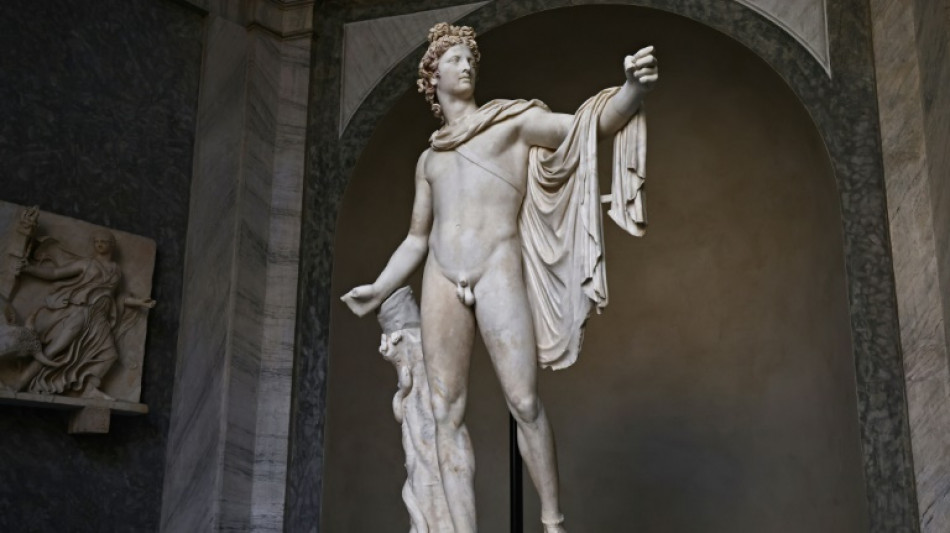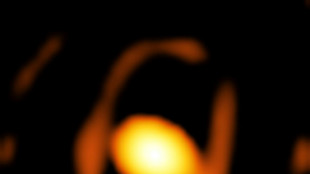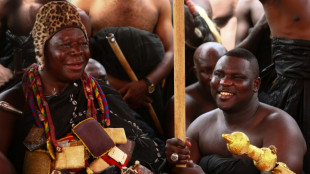

Restored 'Apollo Belvedere' marble back on show in the Vatican
The Vatican Museums on Tuesday unveiled the restoration of the celebrated second-century "Apollo Belvedere" sculpture following five years of work.
Once considered to epitomise classical Western ideals of beauty, the 2.24-metre-high (seven-feet-tall) marble statue shows the Greek god of medicine and poetry in motion, his left arm having just let fly an arrow from his bow.
Its around 260,000-euro ($280,000) restoration aimed to fix serious structural defects detected late in 2019, the restorers said.
Those notably included fragilities in the legs and an overall lack of balance in the structure, they told a press conference.
Thanks to the introduction of a carbon-fibre rod fixed to the back of the base, the "Apollo Belvedere" was successfully stabilised and presented to public applause at the Vatican's Pio-Clementine Museum.
The most difficult thing was "not to touch anything on the sculpture" and avoid having to move and dismantle it, the restoration workshop's head Guy Devreux told AFP.
"We found this new system, which is a dynamic structural system based on the use of carbon fibre... and which, used in the right way, can give extraordinary results," he added.
For the Vatican Museums' director Barbara Jatta, "the main challenge was to have the courage to close access to such an important icon for our museums".
Discovered in 1489 among the ruins of an ancient Roman house, the "Apollo Belvedere" was brought to the Vatican by Pope Julius II.
Besides the carbon-fibre rod, the restorers also replaced the statue's left hand with a cast taken from a fragment of a plaster copy of the original Greek statue made in Roman times.
The "Apollo Belvedere" is in fact considered to be a marble copy of a bronze from around 330 BC attributed to Leochares, one of the foremost sculptors of his time.
E.Sanchez--LGdM




